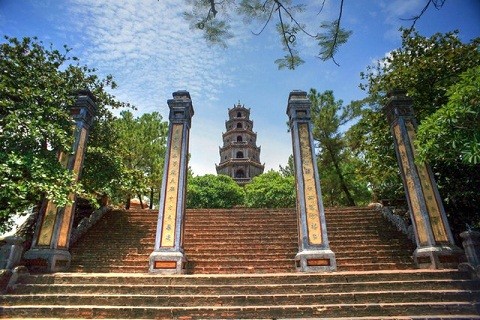 Thien Mu pagoda lies on a hill (Photo: Thu Hang/VOV) Thien Mu pagoda lies on a hill (Photo: Thu Hang/VOV) |
Legend has it that an old lady with a benevolent face used to appear at Ha Khe hill every night and told people that a pagoda would soon be built here by a lord to absorb the essence of the earth and heaven to empower the nation.
In 1601, after Lord Nguyen Hoang had been sent to Thuan Hoa (present-day Central Vietnam) to rule the area, he himself made a survey of the terrain to choose a site best suited for settling down. As he rode his horse upstream along the Huong River side, he saw a small green hillock beside the river, which looked like a dragon turning its head back. He built a pagoda there and named it Thien Mu, which means, ‘Holy Lady.’
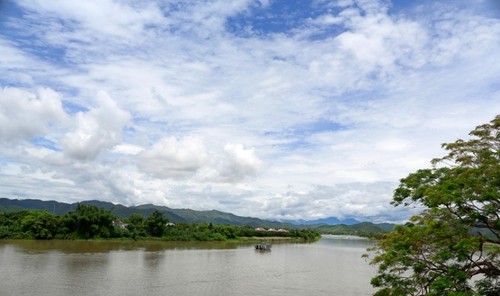 The Huong river hugs Ha Khe hill where Thien Mu pagoda lies on (Photo: Thu Hang/VOV) The Huong river hugs Ha Khe hill where Thien Mu pagoda lies on (Photo: Thu Hang/VOV) |
Nguyen Thanh Dat, who was born in Hue, visits Thien Mu pagoda at least once every year despite living far away. He said: “I often visit Thien Mu pagoda during the Lunar New Year festival. I feel relaxed, peaceful, and free from all worries and cares every time I’m there.”
Thien Mu pagoda is characterised by Hue architecture. Seen from above, it resembles a giant turtle extending its shadow onto the Huong river. The pagoda is surrounded by two layers of stone walls. The three-door entrance gate was built to two storeys and eight roofs with a statue of the Guardian, placed before each door as a protector.
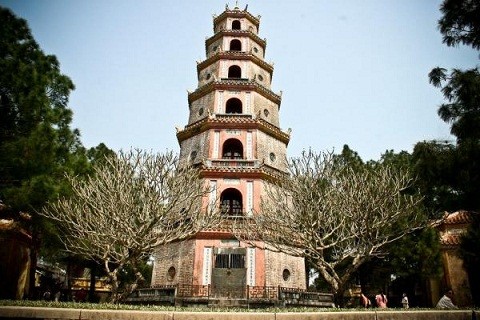 Phuoc Duyen tower (Photo: Thu Hang/VOV) Phuoc Duyen tower (Photo: Thu Hang/VOV) |
A stairway leads visitors to Phuoc Duyen tower, an octagonal brick tower built in 1844, standing 21 meters high and comprised of seven storeys, each of which is dedicated to a different form of the Buddha. Inside the tower is a spiral stairway leading from the ground floor to the seventh storey, where there used to be a gold statue of the Buddha.
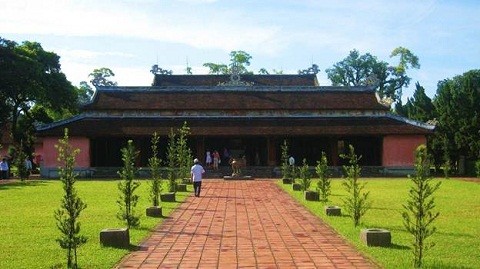 Dai Hung shrine (Photo: Thu Hang/VOV) Dai Hung shrine (Photo: Thu Hang/VOV) |
Dai Hung shrine is located in the main-hall, which worships Maitreya or Laughing Buddha, who has large ears to hear the words of all the suffering of beings, a big belly to tolerate the wrong-doings of the people, and big mouth to laugh a laugh echoing in all the galaxy. On the top there is an inscription in four languages, indicating the mountain peak as the place where the Lord Buddha taught the Dharma for the second time. Inside the shrine hangs a fairly large copper bell in the shape of the moon.
Phan Ngoc Tuyen from Hai Duong province said: “This is the first time I’ve been to Thien Mu pagoda. I’m speechless. The natural setting of the turquoise Huong river elevates the pagoda’s holiness. I’ve often seen romantic postcards of Hue before. When I see it with my own eyes, I can say for sure that it lives up to the hype.”
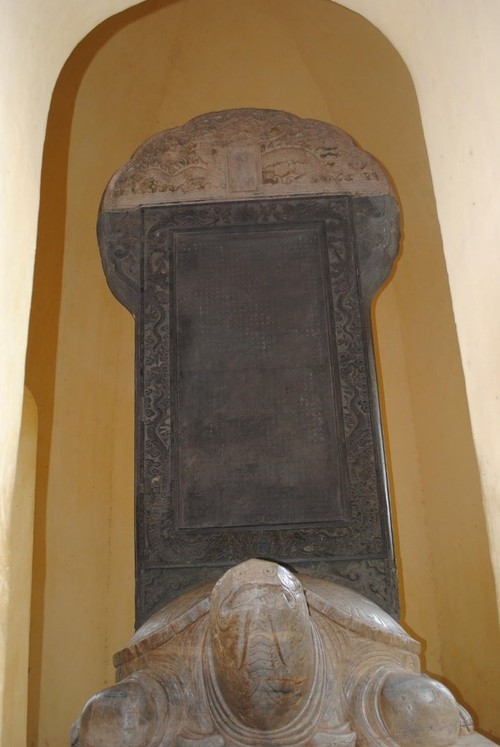 A stele erected on a giant turtle's back describes the construction of Thien Mu pagoda (Photo: Thu Hang/VOV) A stele erected on a giant turtle's back describes the construction of Thien Mu pagoda (Photo: Thu Hang/VOV) |
Passing Dai Hung shrine, visitors reach two palaces at which can be found other representations of the Buddha. One is delicately carved while the other has more modest ornamentation.
The garden at the rear hosts an exhibit featuring the blue car used by late monk Thich Quang Duc to get himself to Sai Gon (now Ho Chi Minh City) where he burned himself to protest the suppression of Buddhism in 1963. Also there is the tomb of late monk Thich Don Hau, the famous abbot of Thien Mu pagoda, who devoted his life to charitable activities and the revival of Buddhism.
Hugged by the winding Huong river, Thien Mu is adorned with pine trees, bonsais, and meditative ponds. French visitor Alain Maillochon said: “Vietnam is a wonderful country. This is my first time in Hue. I will stay here for three days. I find this city peaceful and tranquil.”
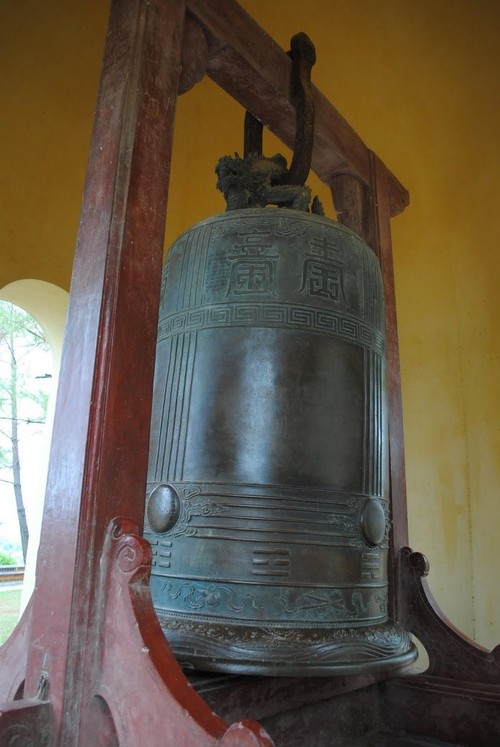 Dai Hong bell inside Thien Mu pagoda (Photo: Thu Hang/VOV) Dai Hong bell inside Thien Mu pagoda (Photo: Thu Hang/VOV) |
Thien Mu pagoda has fewer Buddha statues than can be found in other pagodas in Vietnam. It rather resembles a royal palace of the feudal regime.